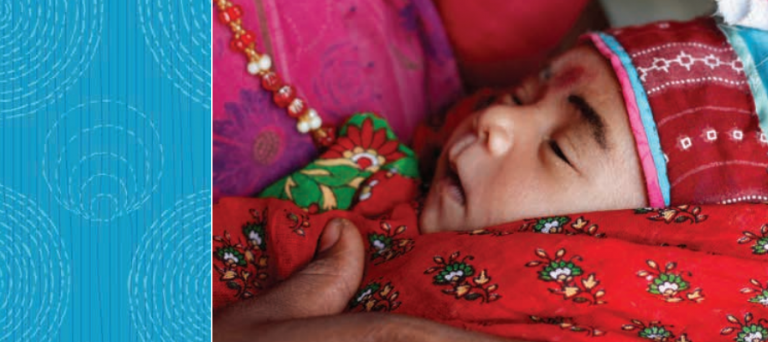Blog by Carlisle Levine and Sarah Roma.
In 2000 the newborn mortality rate in Bangladesh was more than 39 per 1,000 live births, accounting for approximately half of all deaths for children under 5 years of age,[1] but few were paying attention. Save the Children’s Saving Newborn Lives (SNL) program wanted to help place newborn health higher on the national agenda, but how could it do so? SNL had the evidence and knew whom it needed to reach, but it did not have the profile or the access required.
As part of its advocacy strategy, SNL partnered with several influential experts on newborn health, including Professor Dr. Mohammad Shahidullah, a newborn health champion. SNL supported Shahidullah’s participation in national and international forums on newborn health, and provided technical support to him as he led the development of the National Neonatal Health Strategy in 2009. He influenced the Ministry of Health and Family Welfare to incorporate four newborn health interventions into national policy in 2013. By 2015, the newborn mortality rate in Bangladesh had dropped a dramatic 41 percent to approximately 23 per 1,000 live births.[2] According to SNL,
Prof. Shahidullah and SNL initiated a process that was joined by the Government of Bangladesh, Save the Children as a whole, UNICEF, WHO, and the International Center for Diarrheal Disease Research in Bangladesh. Together they made newborn health the top child health issue in the country. Consequently, over the past 15 years, the government has invested substantially in the issue, and the result is now evident.[3]
Whether to influence policymakers, legislators, the health community, the public, or others, SNL partners with different kinds of champions. They may be pediatricians, such as Shahidullah, or midwives, legislators themselves, journalists, religious leaders, or celebrities. Working together, they identify shared goals, a common strategy, and how their different strengths can complement each other. Through ongoing engagement, they accomplish much more together than they could alone.
But how does SNL know when partnering with a champion might help draw attention to newborn health? How does SNL select the right type of champion and the right individual with whom to partner? How does SNL nurture its relationships with champions over time to help champions increase their support for newborn health or their influence with decisionmakers? And how does SNL know that its relationships with champions are making a difference?
Based on its experience partnering with champions, SNL developed a toolkit that provides guidance and tools to help practitioners answer these questions. We think the SNL Champions Toolkit can be applied very broadly to support improved policies and programs in any sector, not just newborn health. We particularly encourage you to review the Champions Checklist (page 11) and the Champions Framework and Mapping Tool (page 20). Once you have had a chance to test it out, please let us know what you think.
How does SNL select the right type of champion and the right individual with whom to partner? And how does SNL know that its relationships with champions are making a difference?

 |
Dr. Carlisle Levine is an independent evaluation consultant, founder and CEO of BLE Solutions |
 |
Sarah Roma is an independent consultant. |
